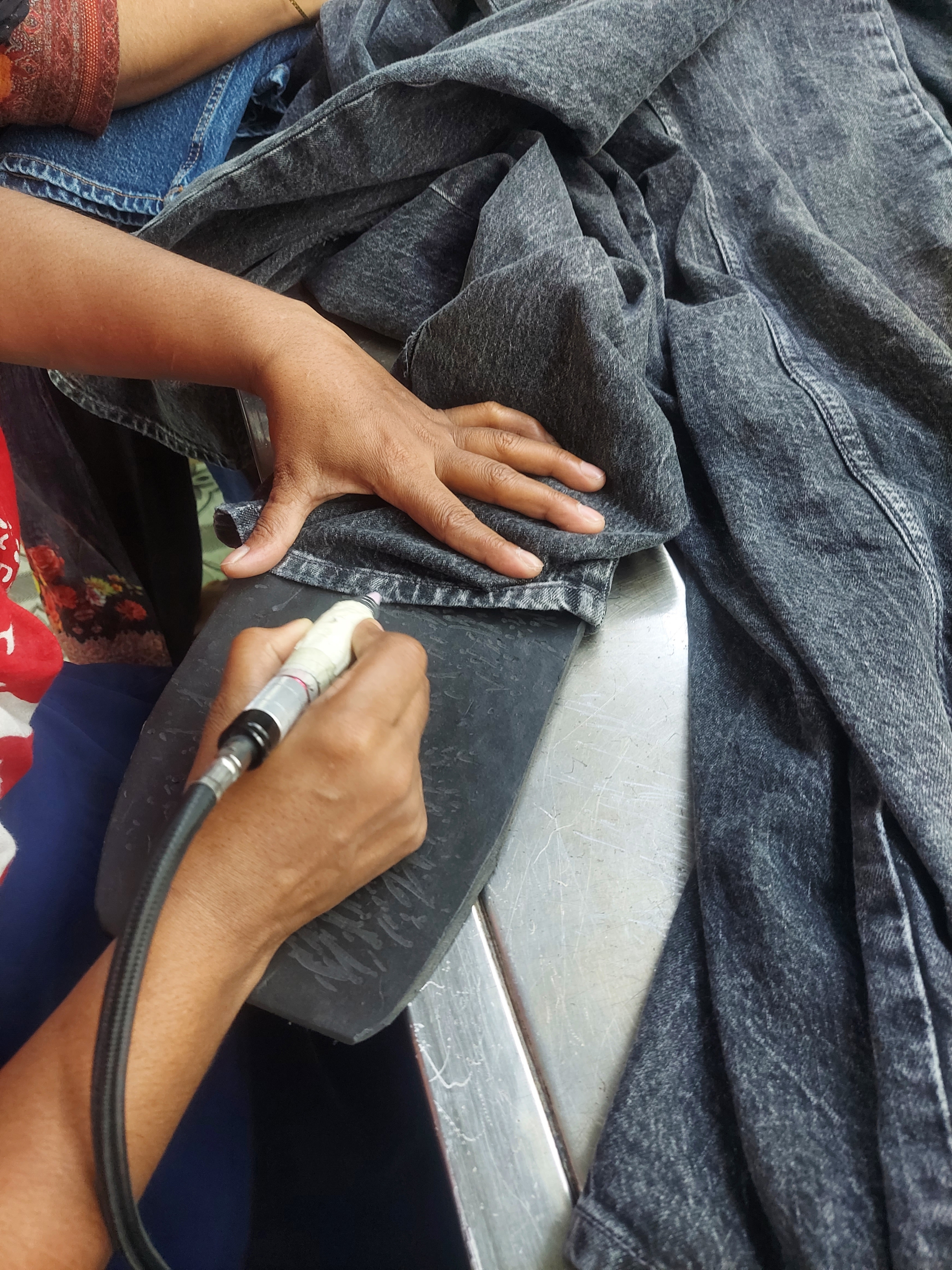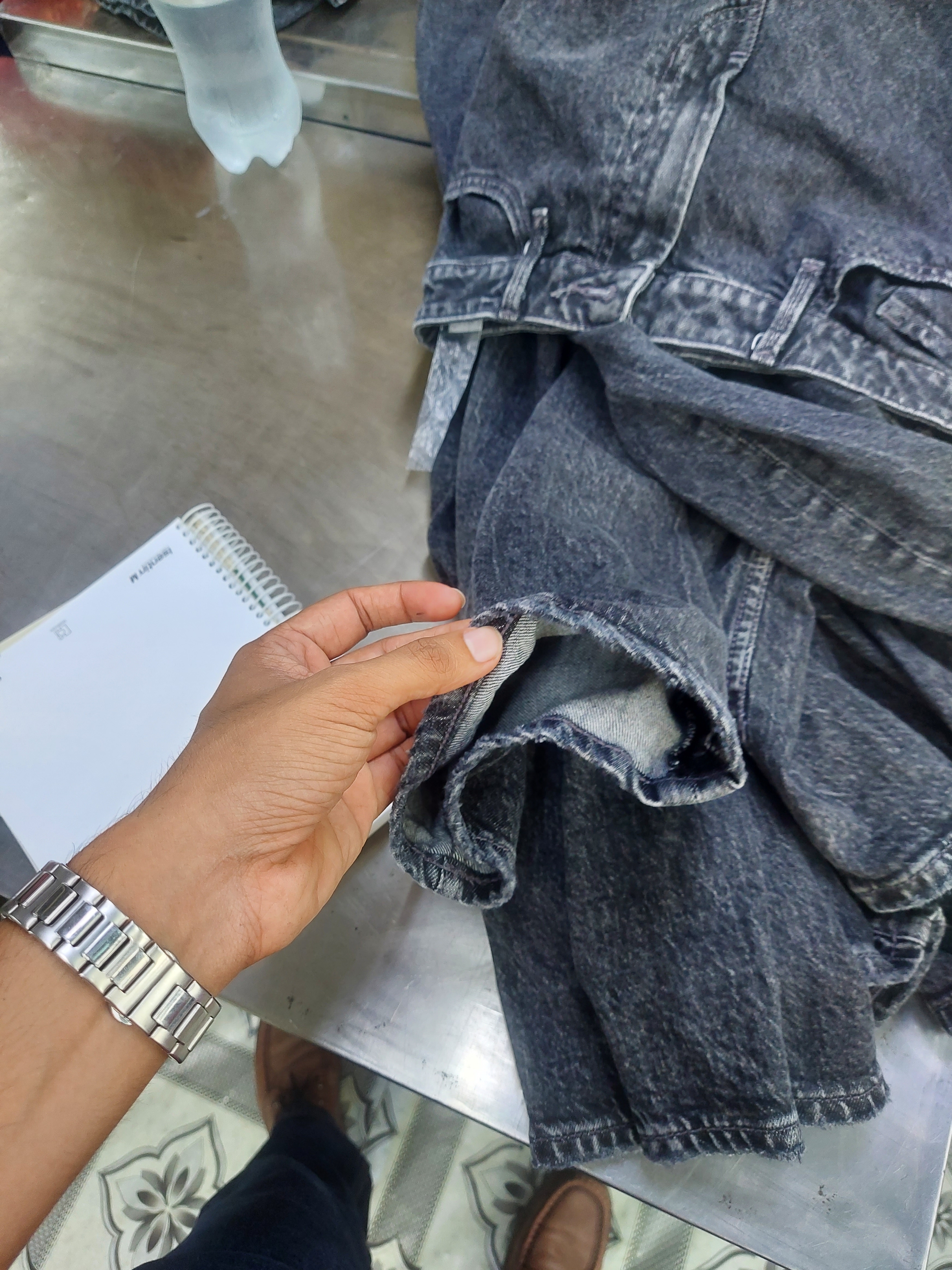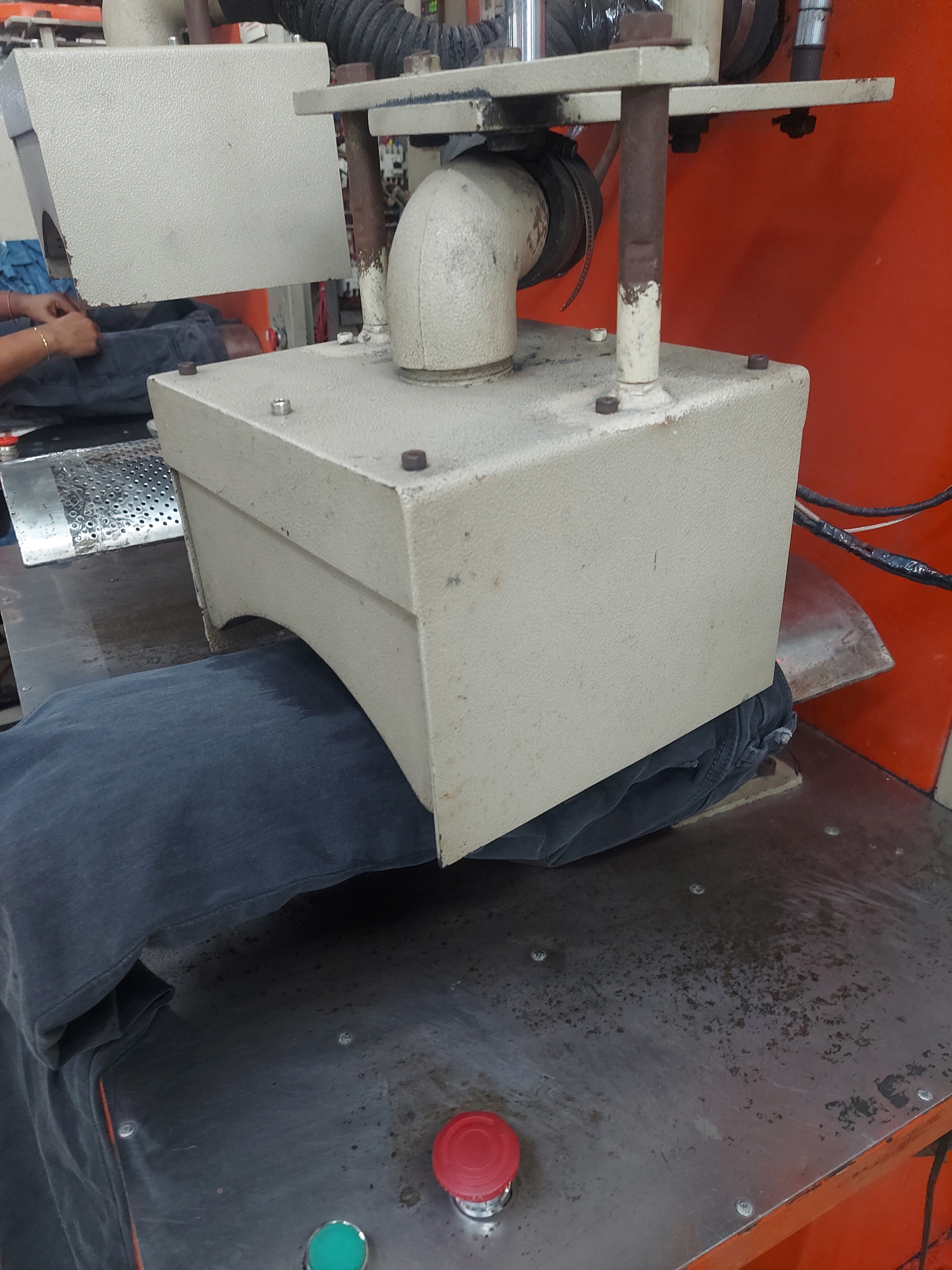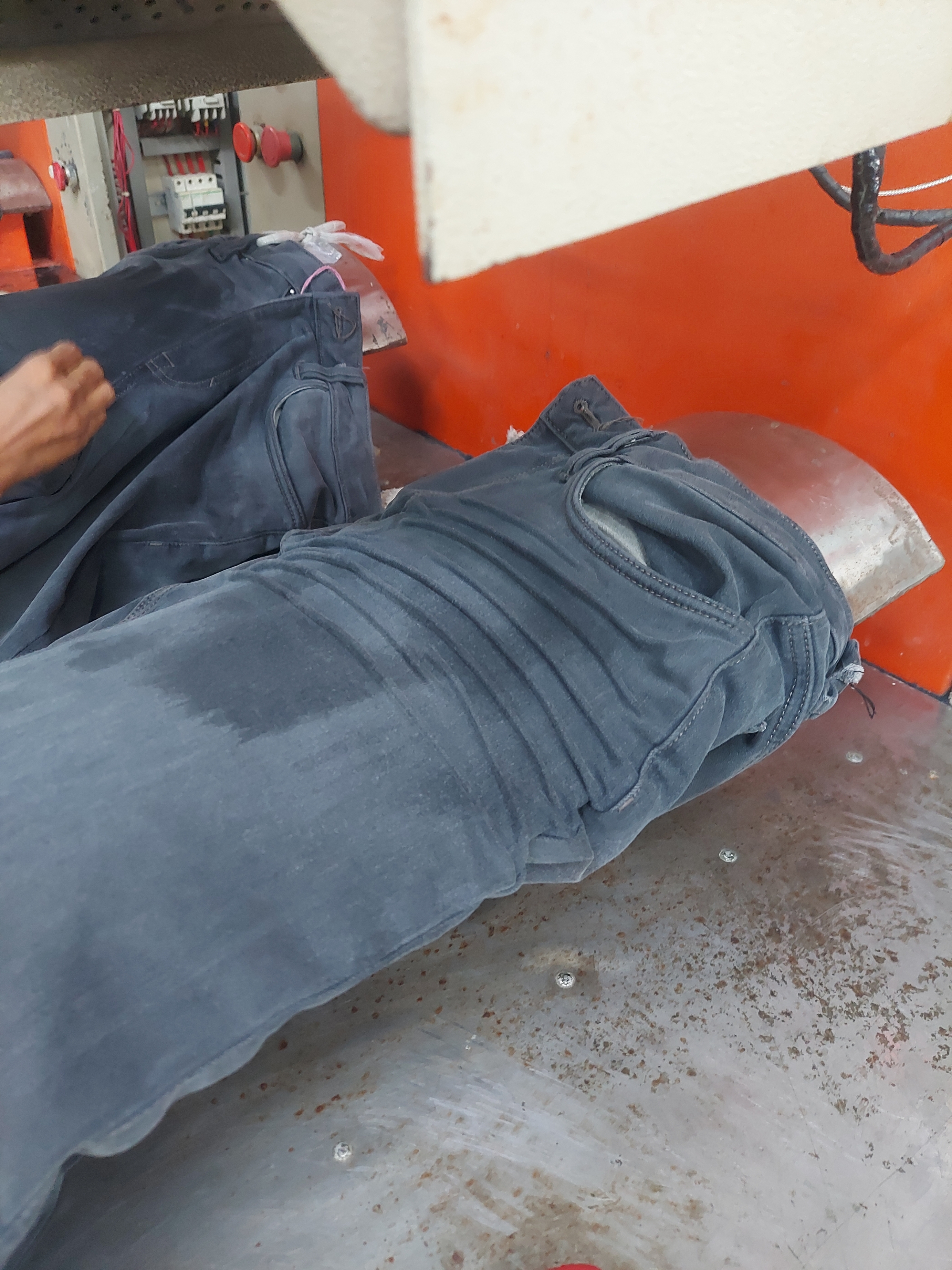Today marked the second day of my internship journey at Hamim Group, Tongi Unit, and our focus again was on the washing section, particularly on exploring more techniques of dry process. After yesterday’s introduction to whisker, hand-sanding, and tagging, today we went deeper and learned about three important steps—Grinding, PP Spray, and 3D Crinkle.
- Grinding




Grinding is one of the most common dry processes used in denim washing. It is usually done with a grinding machine or a hand tool to create a worn-out, distressed effect on specific garment areas such as pockets, hems, or edges. This technique enhances the vintage look of denim by highlighting areas that would naturally fade with long-term use. Grinding must be done carefully because excessive grinding can weaken the fabric, while too little may fail to achieve the desired visual effect. Skilled operators often focus on balance, ensuring both aesthetics and durability.
- PP Spray
PP Spray (Potassium Permanganate Spray) is a chemical-based process applied after the garment has gone through initial washes. It is used to create localized fading or bleaching effects on denim. Spraying is usually done with a hand sprayer in specific areas like thigh, knee, or pocket positions to enhance contrast. The garment is then neutralized to remove chemical residues. PP spray is highly effective for achieving sharp fading patterns, but it requires careful handling because potassium permanganate is a strong oxidizing agent. Safety and proper ventilation are also crucial during this process.
- 3D Crinkle


3D Crinkle is a finishing technique designed to give denim a permanent wrinkled or folded appearance. The garment is first folded and fixed into a certain shape using resin and heat treatment, which helps create realistic creases around the thigh, knee, or back panel areas. This effect adds dimension to the garment and makes it look stylish, modern, and close to natural body movements. Compared to other processes, 3D Crinkle requires more precision since it combines manual folding skills with chemical fixation, ensuring the wrinkles stay intact even after multiple washes.
Reflection
From today’s learning, I realized that dry processes are not just about looks—they are about storytelling through garments. Each grinding mark, sprayed fade, or wrinkle pattern represents fashion trends, customer demand, and technical mastery. Understanding these processes gives me a deeper appreciation for how much creativity and science go into a single piece of denim.
Internship Journey Flowchart
To keep track of my progress, here’s the complete internship journey flowchart. Today we are still in the Washing (Dry Process) stage:
Washing → Bonded Warehouse (Fabric Inspection, Bonded Warehouse) → Cutting → Sewing (All Cost Calculation, Garments Method) → Finishing & Packing → Merchandising
About Me
I am currently pursuing my BSc in Textile Engineering (Apparel Major) and doing my internship at Hamim Group to enhance my knowledge in garment manufacturing and merchandising.
📌 Connect with me: